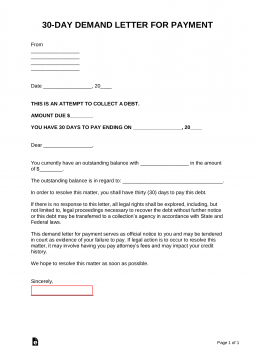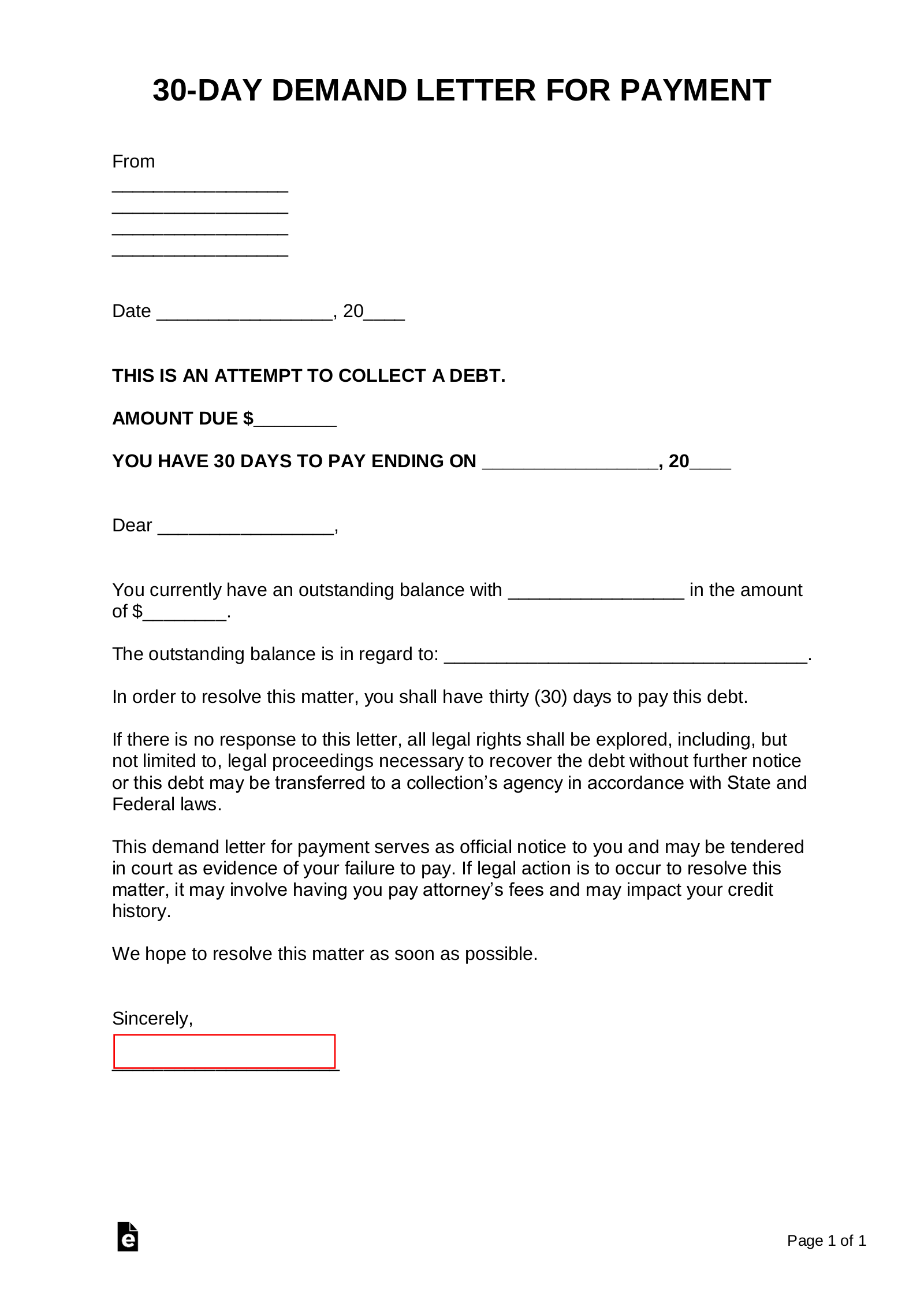Updated August 23, 2023
A 30-day demand letter for payment is used to notify an individual or company in default to pay what is due. Upon serving, the recipient will have 30 days to cure the debt. If the debt is not cured the creditor has the right to forward the amount owed to a collection’s agency or seek legal action through Small Claims Court or by hiring an attorney to file a complaint in district court.
30-Day Notice to Quit – Used to terminate a month-to-month lease.
What to Include?
- The Demand letter should identify the claimant – Include First and Last name along with the residential address.
- The Demand letter should provide a factual account of the issue at hand with a timeline of events.
- The Demand letter should also advise of the damages that have been incurred.
- Provide a description of the available demand relief.
How to Write a 30-Day Demand Letter (6 steps)
- Include Personal Information
- Description of Violation
- List Damages
- Intent to Pursue Legal Action
- Give Settlement Options
- Deliver the Letter
3. List Damages
The Demand Letter should include an itemized statement of any costs incurred (gather all pertinent documents to ensure you have proof of money owed – contracts, receipts, tapes, pictures, emails, etc.), providing a description of the property that has been lost or describing any injuries that have been suffered to the applicable parties due to the deceptive or unjust act.
4. Intent to Pursue Legal Action
Providing a strong ultimatum if the claimant does not comply with the letter; they may be able to avoid a lawsuit if the issue does not get rectified, is also an option to help assist in immediate resolution. If applicable within local state laws, the letter should state what other damages may be incurred if they do not comply with the letter (i.e., the claimant would pay all legal fees that an individual may have incurred).
5. Give Settlement Options
Dependent on the amount in question, different options can be provided to a claimant for the settlement.
- The claimant may be provided the option to pay one lump sum in full;
- They may be provided the option to make payments over a set amount of time; and
- They may be given an option to make a lesser payment amount but would be required to pay in a one-time payment.
The last option is offered if an individual feels the debtor would not be able to make the full required payment (doesn’t have a steady job, valuable real property or investments), even if done over time.


